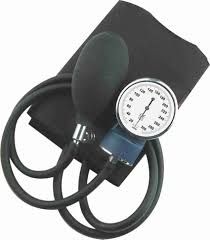Aneroid sphygmomanometers, commonly referred to as manual blood pressure monitors, are essential instruments used to measure blood pressure. They are widely utilized in clinical settings, hospitals, and for home monitoring due to their accuracy and reliability.
Key Features
- Mechanical Design: Aneroid sphygmomanometers consist of a cuff, a manometer (pressure gauge), and a bulb for inflation. The gauge typically measures pressure in millimeters of mercury (mmHg).
- Cuff Sizes: Available in various sizes to accommodate different arm circumferences, ensuring accurate readings.
- Calibration: Many models come with a calibration warranty, ensuring long-term accuracy. For instance, some brands guarantee calibration within ±3 mmHg.
Types of Aneroid Sphygmomanometers
1. Palm Type: Compact and easy to use, suitable for home users.
2. Desk/Wall Mounted: Designed for clinical settings, providing easy access for healthcare professionals.
3. Pocket Models: Portable options that can be carried easily for on-the-go monitoring.
Popular Brands and Models
- Dixie EMS Aneroid Sphygmomanometer:
- Features a 300 mmHg manometer, chrome-plated air release valve for precise deflation control, and comes with a carrying case.
- MDF Instruments:
- Offers several models including the Iconica and Bravata, known for their durability and accuracy. They provide a lifetime calibration warranty on the gauge.
- ADC Sphygmomanometers:
- Known for their affordability and reliability, with models available for both adults and children.
Usage Instructions
1. Preparation: Ensure the patient is seated comfortably with their arm at heart level.
2. Cuff Application: Wrap the cuff around the upper arm, ensuring it is snug but not too tight.
3. Inflation: Use the bulb to inflate the cuff until the gauge reads about 20-30 mmHg above the expected systolic pressure.
4. Deflation: Slowly release air using the valve while listening with a stethoscope placed over the brachial artery to detect systolic and diastolic pressures.
Advantages of Aneroid Sphygmomanometers
- Accuracy: When used correctly, they provide reliable blood pressure readings.
- No Batteries Required: Unlike digital monitors, aneroid sphygmomanometers do not require batteries or electrical power.
- Cost-Effective: Generally more affordable than electronic alternatives.

